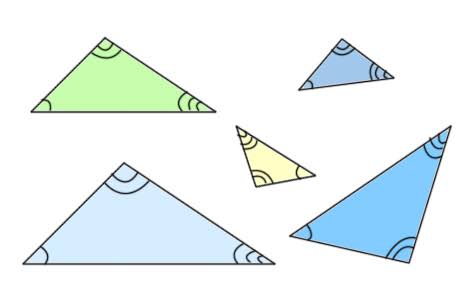Triangle A has an area of #4 # and two sides of lengths #9 # and #3 #. Triangle B is similar to triangle A and has a side with a length of #32 #. What are the maximum and minimum possible areas of triangle B?
1 Answer
Feb 18, 2018
Explanation:

#Given : Delta A (PQR) p = 9, q = 3, A_A = 4, z = 32
To find
Let x,y,z be the sides of second
Hence,
We know,
Then he areas will be proportional to the square of the sides.
